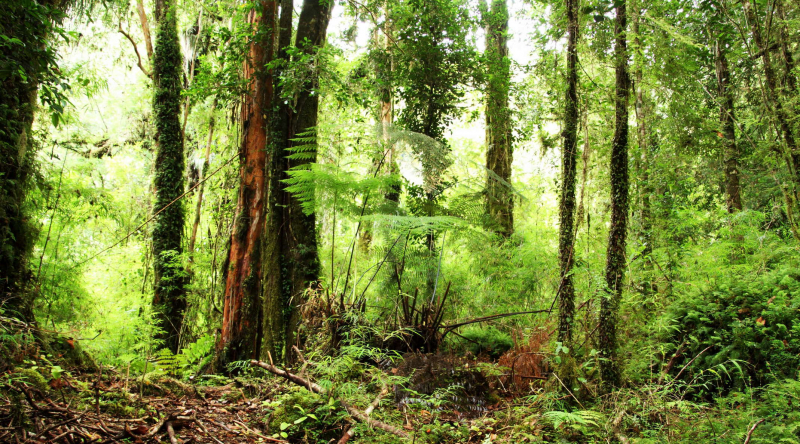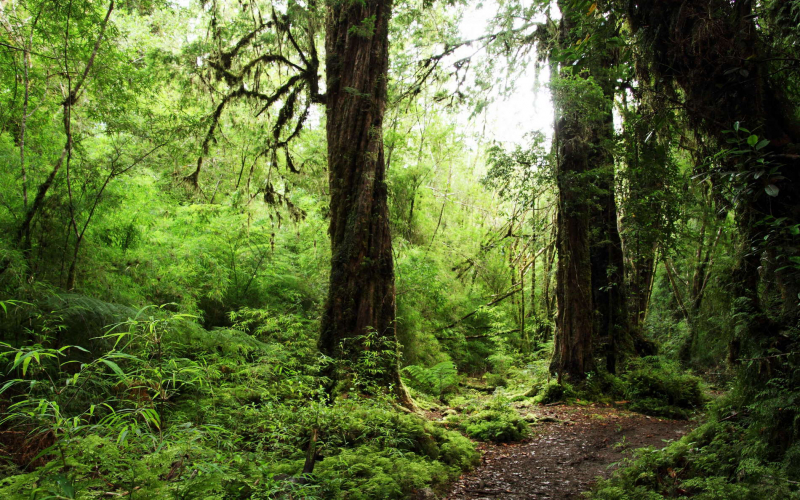Valdivian Temperate Rainforest

The Valdivian Temperate Forest ecoregion is located in South America's southern cone. It spans a tiny swath of land between the Andes' western slope and the Pacific Ocean. In central Chile, the tree line is around 2,400 meters high, dropping to 1,000 meters in the Valdivian region. At these latitudes, the Andean mountains soar to almost 3,000 meters. The temperate woods disappear at these higher elevations, and high Andean vegetation takes their place. The maximum annual average temperatures in the ecoregion range from 13°C in the south to 21°C in the north, with minimum annual average temperatures of 4–7°C. The ecoregion's average annual precipitation ranges from 1,000 mm in the north to more than 6,000 mm in the south. The ecoregion features a mosaic of forest types due to a mix of biogeographic events, temperature and precipitation gradients, a long history of isolation, and recent major climatic changes.
The Valdivian Temperate Forest are a real biogeographic island, cut off from other climatically comparable places by vast ocean barriers and deserts. It is distinguished by its exceptional endemism and variety. Vascular plant species number 700 to 800 in the ecoregion. All vertebrates have 45 percent endemism, 76 percent for amphibians, 50 percent for freshwater fish, 36 percent for reptiles, 33 percent for mammals, and 30 percent for birds at the species level. Three endangered species, as well as the highly endangered Vanzolini's spiny-chest frog, are among the amphibians of interest.











